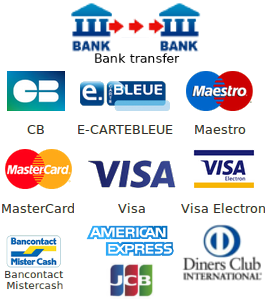No products
Portable stations
Portable stations There are no products in this category.
Subcategories
-
HF
-
VHF/UHF
-
UHF
-
70 MHZ + VHF
La bande 70 MHz désignée aussi par sa longueur d'onde, 4 mètres, est une bande du service radioamateur destinée à établir des radiocommunications de loisir. Cette bande est utilisable en permanence pour le trafic radio local. Cette bande est utilisable sporadiquement pour le trafic radio à grande distance
En Belgique réservé aux licences HAREC -
70 MHZ
La bande 70 MHz désignée aussi par sa longueur d'onde, 4 mètres, est une bande du service radioamateur destinée à établir des radiocommunications de loisir. Cette bande est utilisable en permanence pour le trafic radio local. Cette bande est utilisable sporadiquement pour le trafic radio à grande distance
En Belgique réservé aux licences HAREC -
50 MHZ / VHF
La bande 50 MHz désignée aussi par sa longueur d'onde, 6 mètres, est une bande du service radioamateur destinée à établir des radiocommunications de loisir. Cette bande est utilisable en permanence pour le trafic radio local et régional. Cette bande est utilisable sporadiquement pour le trafic radio à grande distance.
-
D.M.R
Norme DMR
La Digital Mobile Radio (DMR) est une norme de radio numérique conçue pour les utilisateurs de radios mobiles professionnelles (PMR) développée par l’Institut européen des normes de télécommunication (European Telecommunications Standards Institute – ETSI) et ratifiée pour la première fois en 2005.
Cette norme est conçue pour opérer dans l’espace des canaux 12,5 kHz, utilisé à l’échelle mondiale par les bandes de fréquences mobiles terrestres sous licence et pour répondre aux exigences des futures réglementations applicables aux canaux 6,25 kHz équivalents. Le premier objectif est de spécifier des systèmes numériques financièrement accessibles offrant un niveau de complexité réduit.
La DMR offre des services de phonie, de données et d’autres services supplémentaires. Aujourd’hui, des produits conçus sur ses spécifications sont vendus dans toutes les régions du monde.
*****************************
The DMR standard operates within the existing 12.5 kHz channel spacing used in land mobile frequency bands globally. Its primary goal is to specify a digital system with low complexity, low cost and interoperability across brands, so radio communications purchasers are not locked into a proprietary solution.
In practice the brands have not adhered to this open standard and have introduced proprietary features that make their product offerings non-interoperable. DMR provides voice, data and other supplementary services.
DMR is a two-slot, time division multiple access (TDMA) system offering voice, data and a range of other features and applications. -
Fusion - Digital - C4FM
Compared to other digital modulations within FDMA, C4FM has excellent communication quality (BER: Bit Error Rate characteristics). Presently,
C4FM is the standard method for professional communication devices in FDMA, and is therefore expected to continue to be the main stream digital
communication in the future.
Until now, FM repeaters were only used for conventional FM communication, and digital repeaters were only used for digital communication.
There has been no option for cross-communication in a single repeater. However, System Fusion can be used in multiple ways, for digital communication, for conventional
FM communication and even internet communication. Most importantly, System Fusion enables intercommunication between all users. This is
enabled by the AMS (Automatic Mode Select) function used in System Fusion. With AMS, the modulation of your station is automatically selected according to
the received signal. If a member transmits in conventional FM, the other radios in the System Fusion automatically select their modulation to conventional
FM to communicate between all members.
V/D mode (Voice/Data simultaneous communication mode)
The digital voice signal is transmitted in one half of the bandwidth. Simultaneously the other half of the 12.5 kHz bandwidth channel is used
for error correction of the voice signal and other data.
By incorporating powerful error correction technology developed for professional communication devices, effective error correction codes
provide the advantage of fewer interruptions to conversations. The standard C4FM FDMA Digital mode provides the ideal balance of error
correction and sound quality with the Digital Clear Voice technology developed for C4FM digital.
Voice FR mode (Voice Full Rate Mode)
This mode uses the full 12.5 kHz bandwidth to transmit digital voice data. The increased amount of voice data permits high quality voice communication, providing superb
sound quality for a “rag chew” with friends.
Data FR mode (High Speed Data Communication Mode)
This high-speed data communication mode uses the full 12.5 kHz bandwidth for data communication. The transceiver automatically switches to Data FR mode when transmitting
Snapshot pictures, and can be used to transmit large quantities of data at high speed.
FM mode
Analog FM is effective when weak signal strength causes audio drop out in the digital mode, and enables communication up to the borderline of the noise level.
Also the use of established Yaesu low power circuit designs provides far less battery consumption than the digital mode. -
D-STAR
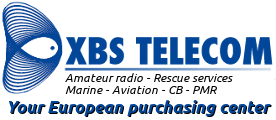
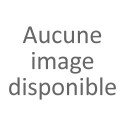



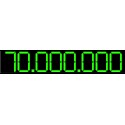
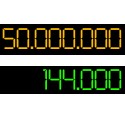
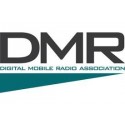
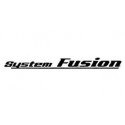

 INSTANT-CASHBACK / GIFTBACK
INSTANT-CASHBACK / GIFTBACK
